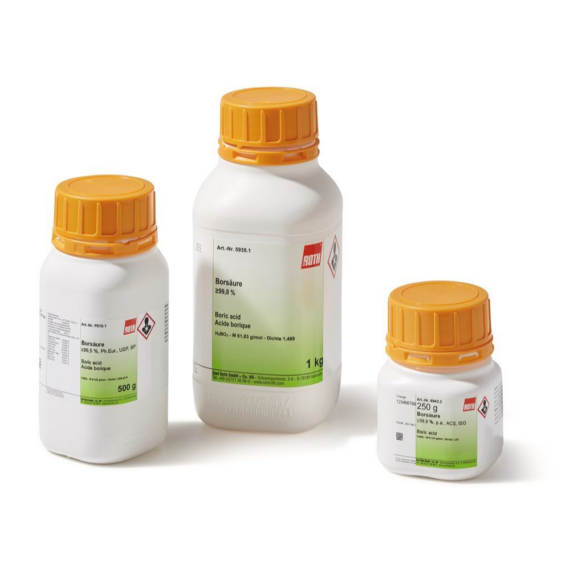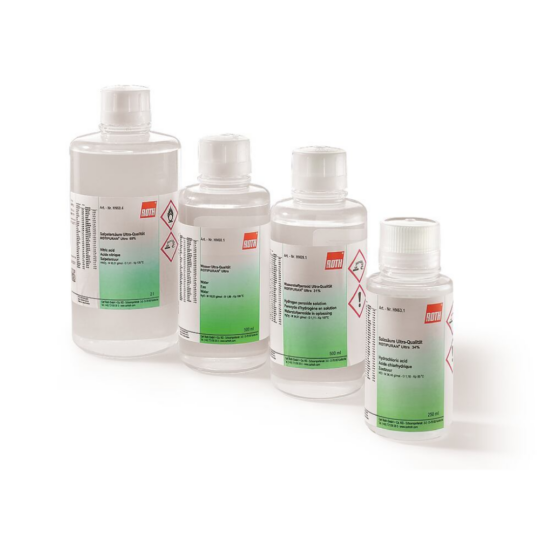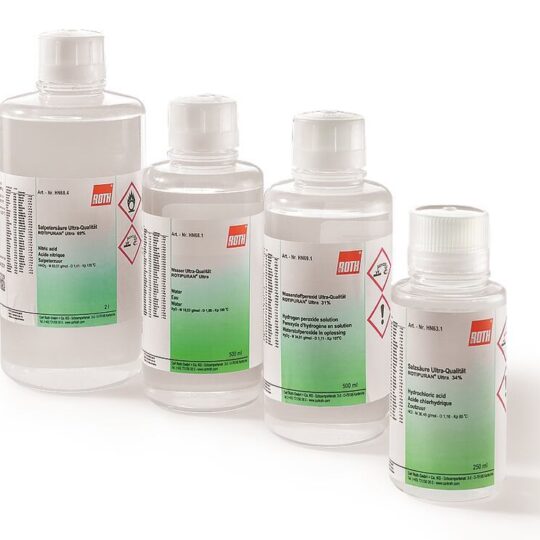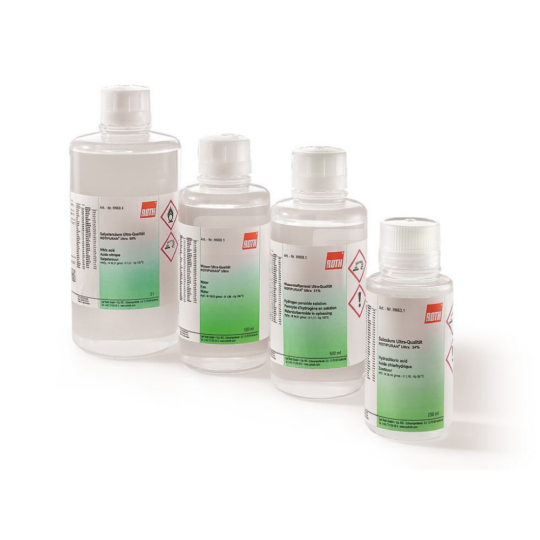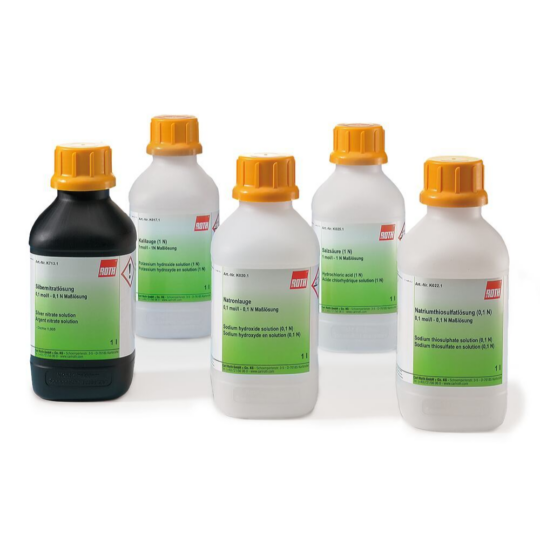Boric acid ≥99,8 %, p.a., ACS, ISO
Bs. 26.80 – Bs. 962.15
Empirical formula H3BO3
Molar mass (M) 61,83 g/mol
Density (D) 1,489 g/cm³
Melting point (mp) >100 °C
WGK 1
CAS No. 10043-35-3
EG-Nr. 233-139-2
Buffer substance, for molecular biology
| Assay (acidim.) | ≥99,8 % |
| In CH3OH insoluble matter | ≤0,005 % |
| Chloride (Cl) | ≤0,0005 % |
| Sulphate (SO4) | ≤0,002 % |
| Phosphate (PO4) | ≤0,0005 % |
| Heavy metals (as Pb) | ≤0,0005 % |
| Arsenic (As) | ≤0,00005 % |
| Calcium (Ca) | ≤0,002 % |
| Cadmium (Cd) | ≤0,0005 % |
| Copper (Cu) | ≤0,0005 % |
| Iron (Fe) | ≤0,0001 % |
| Magnesium (Mg) | ≤0,0005 % |
| Lead (Pb) | ≤0,0005 % |
| Zinc (Zn) | ≤0,0005 % |
| With CH3OH+HCl non volatile matter (as SO4) | ≤0,05 % |
| Please consider that this product might be liable to some legal sanctions as for example to obtain an end user declaration or the prohibition of some applications. For details please do contact your counterpart in our sales department! | |
 |
Examples of effect: Have an allergenic effect, carcinogenic, mutagenic, toxic to reproduction and cause developmental toxicity (reprotoxic) or damage to organs Safety: You must be well-informed before starting work with these substances; wear protective clothing and gloves, eye protection and mask or breathing protection. |
| H360FD | May damage fertility. May damage the unborn child. |
| P201 P280 P308+P313 | Obtain special instructions before use, wear protective gloves/protective clothing/eye protection/face protection, IF exposed or concerned: Get medical advice/attention. |
Description
Boric acid
Determination of Nitrogen according to Kjeldahl
The most common technique for measuring the amount of nitrogen in organic matter is the Kjeldahl method, which is used in a wide range of sectors such as environmental analysis, food analysis, water analysis and agricultural analysis, as well as in the pharmaceutical and chemical industries. In this traditional method, a precisely weighed sample is broken down using concentrated sulphuric acid, a process which digests its organic contents and reacts nitrogen to form ammonium sulphate.(CHNO)(s) → CO2 (g) + SO2 (g) + H2O (g) + NH4SO4 (solv, H2SO4)A catalyst or catalyst mixture consisting of copper, selenium, mercury and/or titanium is added to speed up the reaction. Sodium or potassium sulphate is used to give the sulphuric acid a higher boiling point. If the nitrogen is contained in a nitro, nitroso or azo compound, however, the mixture must be reduced with zinc before digestion takes place.
The nitrogen is now present in the sulphuric acid as ammonium sulphate. Adding a strong base (such as NaOH) neutralises the sulphuric acid and liberates ammonia from the solution.NH4SO4 (solv) + 2 NaOH (aq) → Na2SO4 (aq) + 2 NH3 (g) + 2 H2O (l) The ammonia is led into an acid (such as boric acid) by means of steam distillation.B(OH)3 (aq) + 2 H2O (l) + NH3 (g) → B(OH)4- (aq) + NH4+ (aq) The resulting strong base (borate ion) is back-titrated with a strong acid (hydrochloric acid or sulphuric acid). The excess weak boric acid is not captured in the process. A Tashiro’s indicator that changes colour in the acid is used for titration. The amount of acid that has been used up can then be converted into the amount of nitrogen in the sample. NH4+ (aq) + B(OH)4- (aq) + HCl (l) → NH4Cl (aq) + B(OH)3 (aq) + H2O (l)To calculate the protein content of the sample, the varying nitrogen content of the amino acids must be checked and the relevant conversion factors applied. The nitrogen contained in food derives mainly from proteins, but different samples may also contain other sources of nitrogen.
Acids and Bases for Analysis (p.a.)
Carl ROTH provides suitable acids and bases for different requirements!
- High purity
- High batch consistency
- Detailed specifications
- Good price-performance ratio


